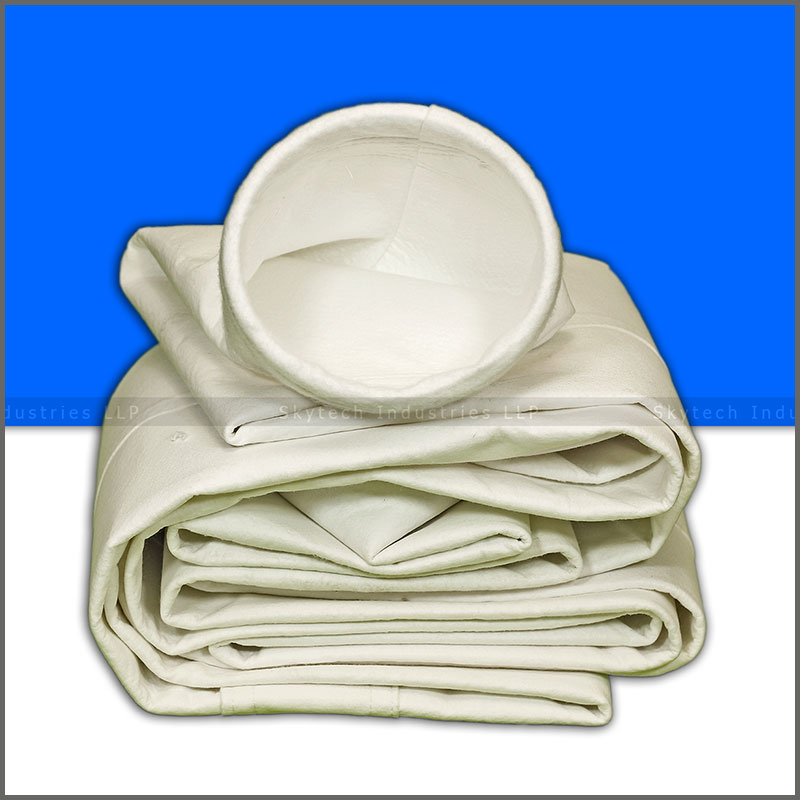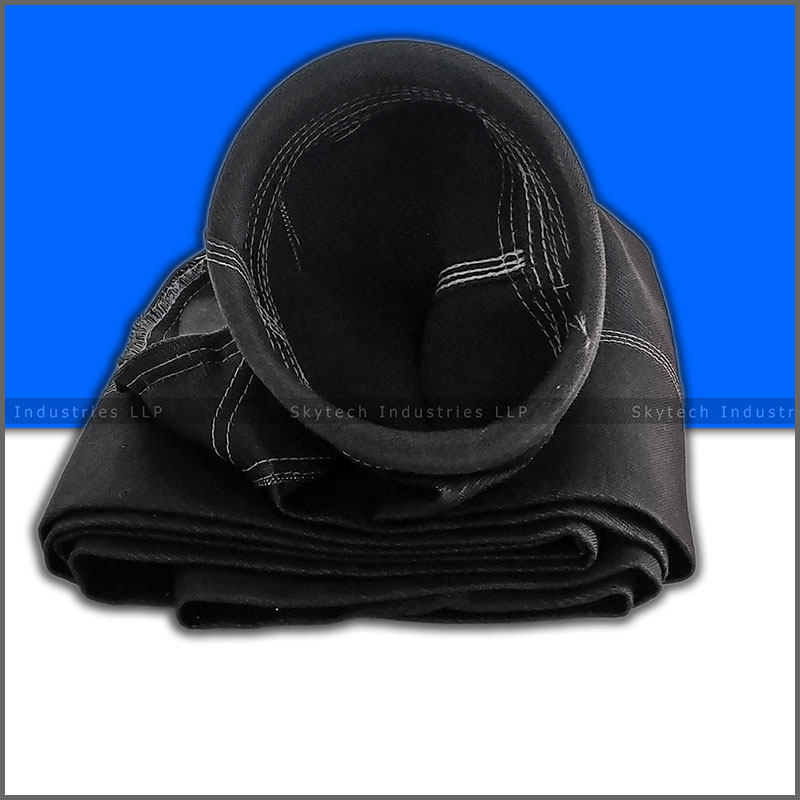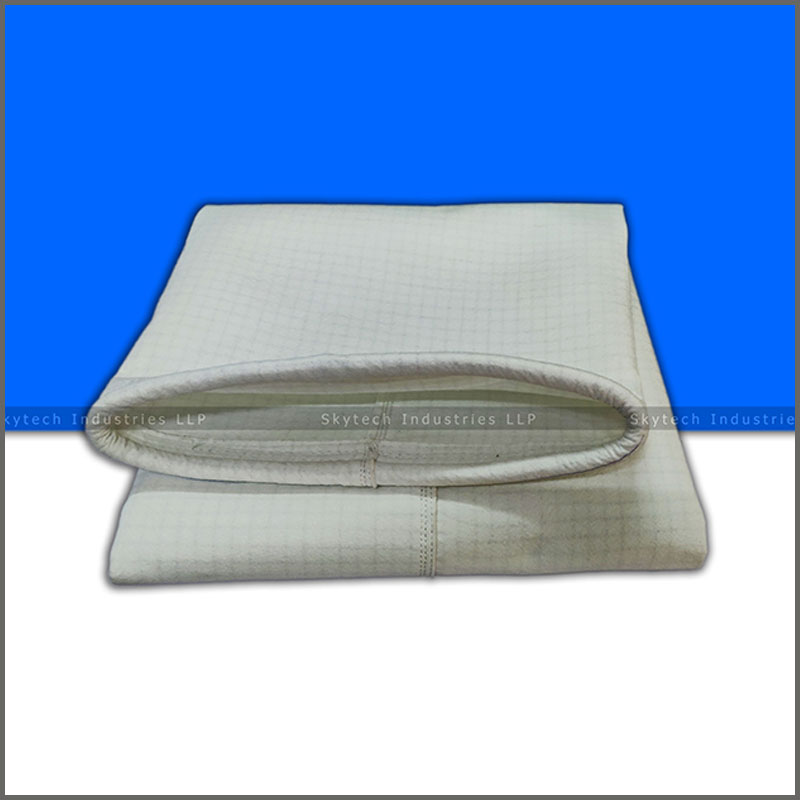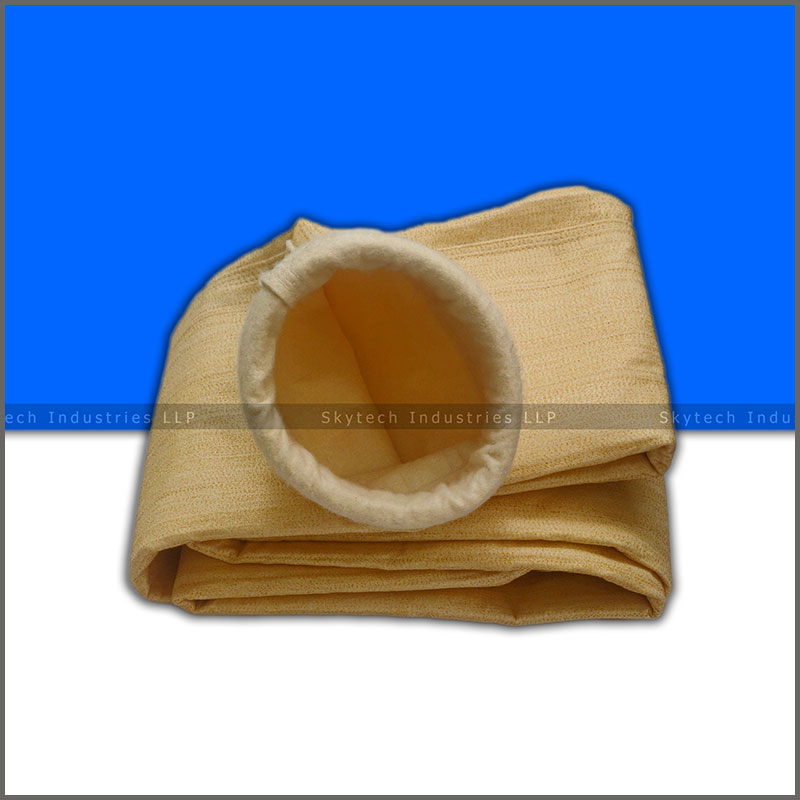Conventional Filter Bags
We supply conventional filter bags for various applications in woven and non- woven media. For reference please see the table below
Coating Available
- Antistatic treatment with carbon fibre
- Antistatic treatment with stainless steel wire
- Antistatic treatment with stainless steel fibre
- Egg Shell finish
- Water &oil repellent
- PTFE coating
- PTFE laminated
- SGT Finish (For fibreglass)
- Acid Resistant (for fibreglass)
Configurations
- Snap band type
- Flange collar type
- Rubber cord type
- Customized
Sizes
- As per requirement of the customer.
| Media | Temp Resistance | Acid | Alkalis | Hydrolysis | Oxydation |
|---|---|---|---|---|---|
| Non-woven needle felt polyester | 150 C | Good | Poor | Poor | Good |
| Non-woven needle felt polypropylene | 190 C | Excellent | Excellent | Excellent | Poor |
| Aramid / Nomex / Conex. | 205 C | Poor | Excellent | Poor | Fair |
| Homopolymer Polyacrylonitrile. | 125 C | Good | Good | Good | Fair |
| Polyacrylic | 135 C | Excellent | Excellent | Excellent | Excellent |
| PTFE | 260 C | Excellent | Excellent | Excellent | Excellent |
| P84/ Polymide | 235 C | Fair | Fair | Good | Good |
| PPS/ Ryton | 190 C | Excellent | Excellent | Excellent | Fair |
| Fibreglass | 285 C | Good | Fair | Excellent | Excellent |
Non-woven media has proved to be better and cost effective in the long run.
Woven and knit fabrics are two-dimensional filter bag media in which yarns overlap one another. Due to the overlapping of yarns, the size of the pore, or the opening between the yarns, is quite large; which can be seen by holding up a piece of these filter fabrics into the light.
Here are some advantages of non-woven media over woven.
The only area which these fabrics allow air to pass through are the visible holes. The other areas are void, therefore, decreasing the available pore surface area.This increases the filtration system’s air-to-cloth ratio because there is less square footage of cloth to let air pass through.This also increases the velocity of the air passing through the fabric.If the particulate is small, then the pressure differential increases drastically.
When the fabric is cleaned, by shaking or pulse action, some of the particles will be removed from the pores. However, some particles remain.Over a longer period of time, particles will fill up the pores and cleaning the filter bags will be of no help. At this stage, the pressure differential will remain permanently high and the filters will have to be replaced.
The disadvantages of using woven or knit fabrics when filtering fine particles (such as coal) are:
- Rapid rise in pressure drop
- High emissions
- Short service life
Most of the problems created by these two filter fabrics can be corrected by changing to needle punched fabrics, also called Needlefelt fabrics. Needlefelts are generally cost effective; but are more expensive than woven or knit fabrics. In the long term, needlefelt fabrics are able to provide an increase in service life, which results in increased cost savings–often more significant than the slightly higher cost of the needlefelt fabrics.
Needlefelt fabrics are 3-dimensional in structure and are comprised of very fine fibers, which are generally 30 microns or less in diameter. The pore sizes are much smaller than the pore sizes of woven or knit fabrics. As a result, it is possible for small particles to be captured on the surface of the filter media. Once the particles are on the surface, they are much easier to clean, resulting in the pressure drop remaining at moderate to low levels and an increased filter bag service life.





